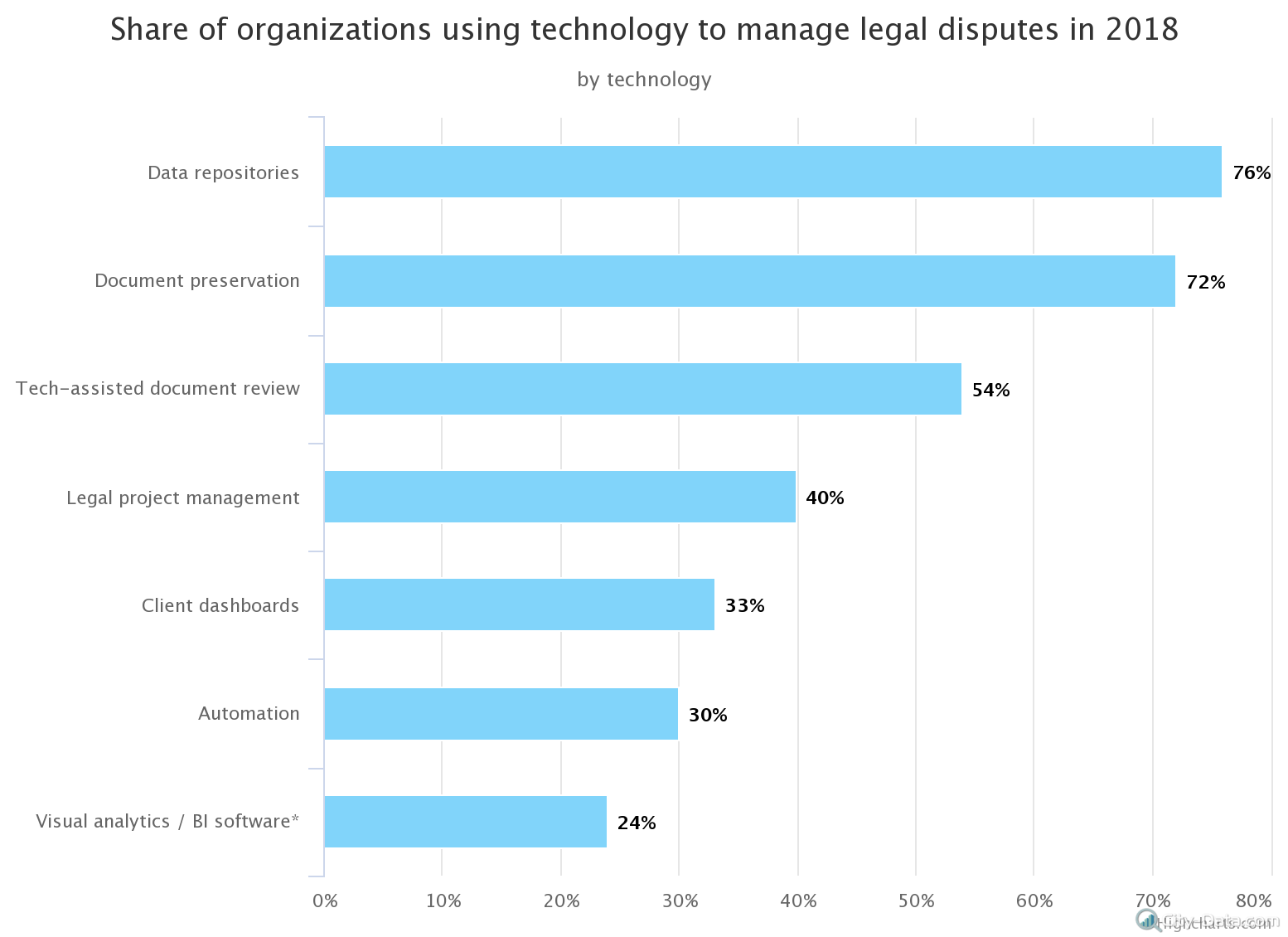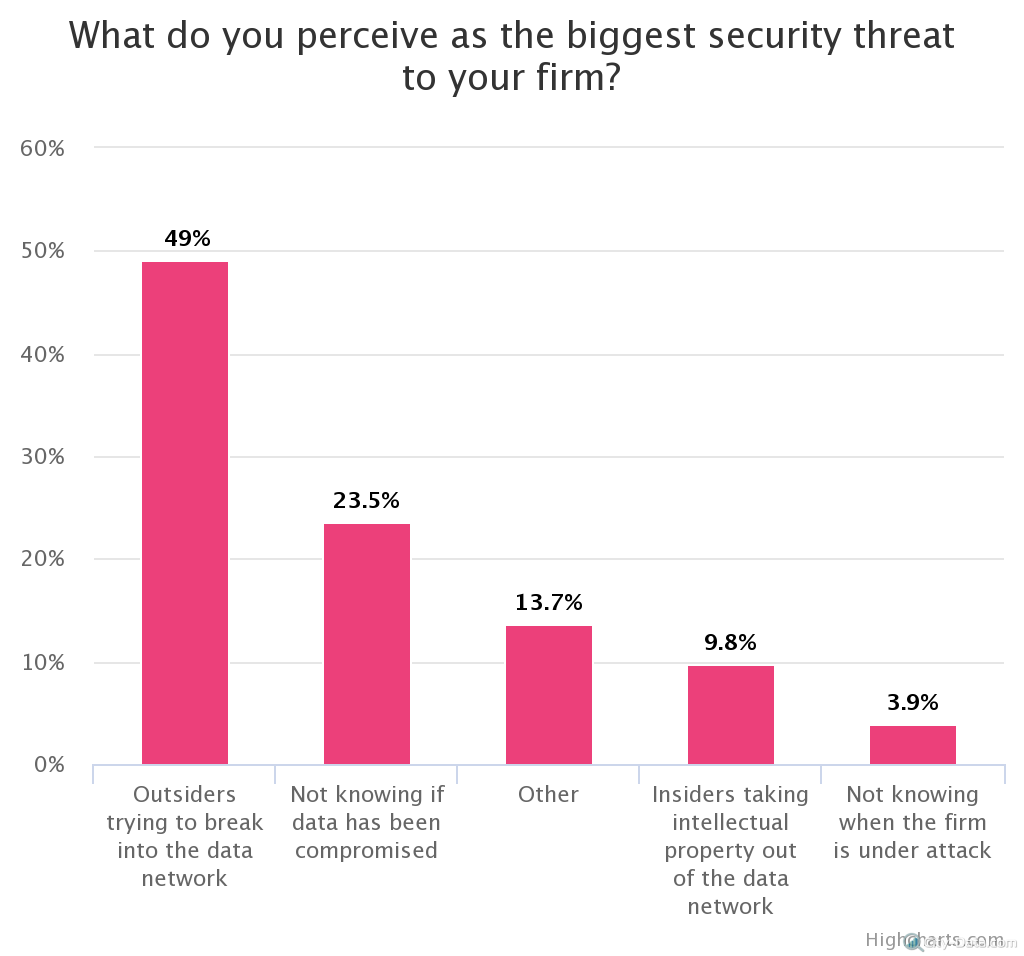Pavel Prikhodko, Ph.D. Machine Learning
Technology is becoming increasingly popular for organizations to use in managing legal disputes. Which specific technologies are the most widely used? According to the results of a survey conducted by Norton Rose Fulbright in 2018, about 72 percent of respondents said that their organization used document preservation technology to assist in dispute management. The largest share of respondents said that they used data repositories, with 76 percent of the organizations using this technology. Tech-assisted document viewing was used by 54 percent of respondents in order to aid in dispute management.
Around 40 percent of respondents stated that they were using legal project management technology. Client dashboards and automation were used to manage legal disputes by 33 percent and 30 percent of respondents accordingly. Additionally, 24 percent of organizations were using visual analytics/BI software to assist in dispute management.

Another survey explored what security threats organizations perceived as the most dangerous. According to senior technology decision makers at leading law firms in the United States, the most dangerous threat to their company was outsiders attempting to break into the network (as of 2017). The second biggest threat was not knowing if data has been compromised. Obviously, this could be quite damaging to an organization as well. The survey found that 13.7 percent of organizations named their most dangerous security threat as “other.” Other threats named by respondents included insiders taking intellectual property out of the data network (9.8 percent) and not knowing when the firm is under attack (3.9 percent).

About Pavel Prikhodko
Pavel Prikhodko, Ph.D. Machine Learning
Pavel has worked for many years as a researcher and developer on a wide range of applications (varying from mechanics and manufacturing to social data, finance and advertising), building predictive systems and trying to find stories that data can tell.
In his free time, he enjoys being with his family.
Other posts by Pavel Prikhodko:
